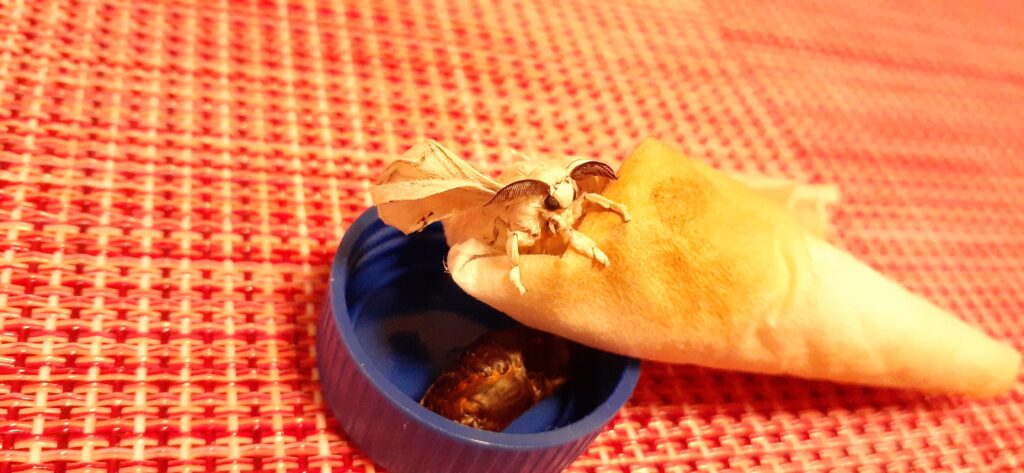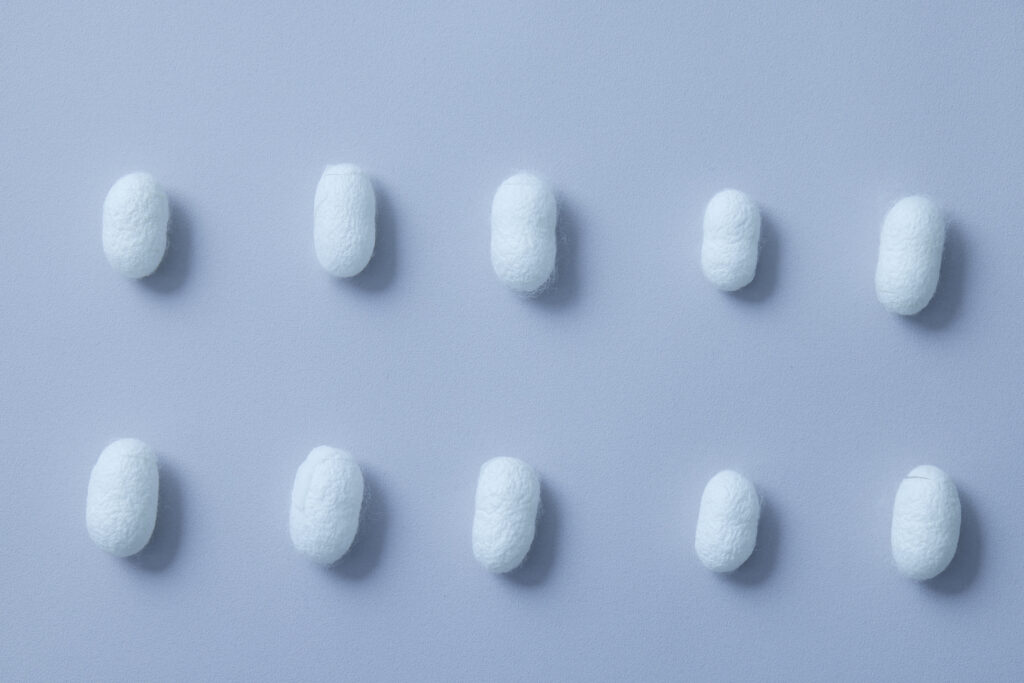What are silkworms?
Silkworms are known for silk thread and silk fabrics. Humans have coexisted with silkworms for thousands of years. Currently, these silkworms hold potential for roles beyond just producing thread.
Silkworms contributed to the development of modern Japan. The high-quality thread produced by silkworm cocoons was once Japan’s largest export in the form of silk thread and silk fabrics. Japan produced about 400,000 tons (approximately 200 billion silkworms) annually. Gunma Prefecture was the largest production area in Japan, and even in the current Reiwa era, it boasts the highest number of sericulture farmers, cocoon production, and raw silk production in Japan.
Although silkworms are a type of moth, selective breeding by humans has resulted in adults that have wings but cannot fly. The larvae cannot eat without humans providing mulberry leaves as feed, making them domesticated insects that cannot survive without human support. They are counted as “head” in Japanese (like livestock) rather than individual insects, reflecting their importance as domesticated insects.

Sericulture is mainly carried out between May and November. Depending on the season, it starts in early May, followed by summer, early autumn, late autumn, very late autumn, and early winter.
Typically, silkworms molt four times before spinning cocoons and becoming pupae. The period before molting when they stop eating mulberry leaves is called “min” (sleep in Japanese), and the active feeding period is called “rei” (instar in Japanese). After hatching from eggs, they go through 1st instar, 1st sleep (3-4 days), 2nd instar, 2nd sleep (3-4 days), 3rd instar, 3rd sleep (3-4 days), 4th instar, 4th sleep (7 days), and 5th instar (8 days). At the end of the 5th instar, they stop eating and prepare to become pupae. About 25 days after hatching, the larva’s body becomes translucent amber, and it begins to form a cocoon. After spinning silk continuously for 2-3 days to complete the cocoon, the larva inside transforms into a pupa.

The pupa, previously considered unnecessary in traditional sericulture, is now utilized through our core technology, the “Silkworm-Baculovirus Expression System.” This technology allows us to express various proteins using silkworm pupae.
Applying this technology, we are advancing protein expression trial services and our own vaccine development projects. Silkworms, which have supported our lives as silk thread and silk fabrics, are now bringing new possibilities through KAICO’s technology.
Click here for more information about our protein expression services.



